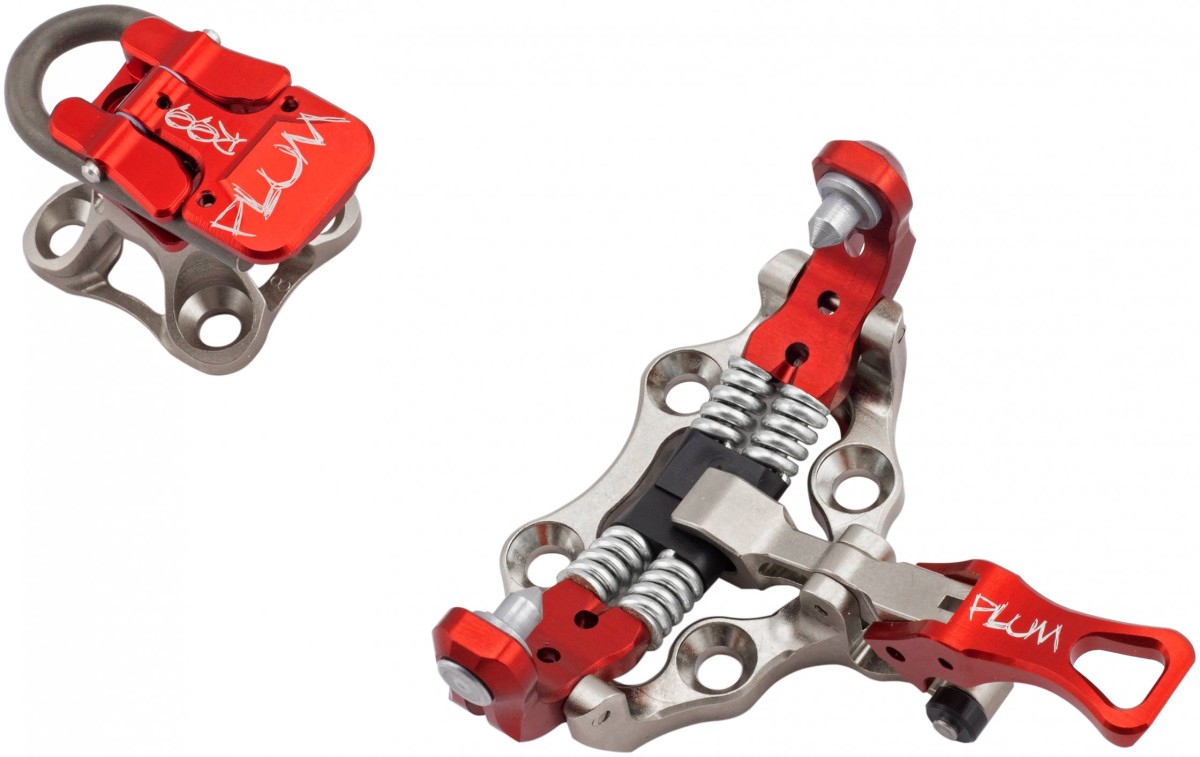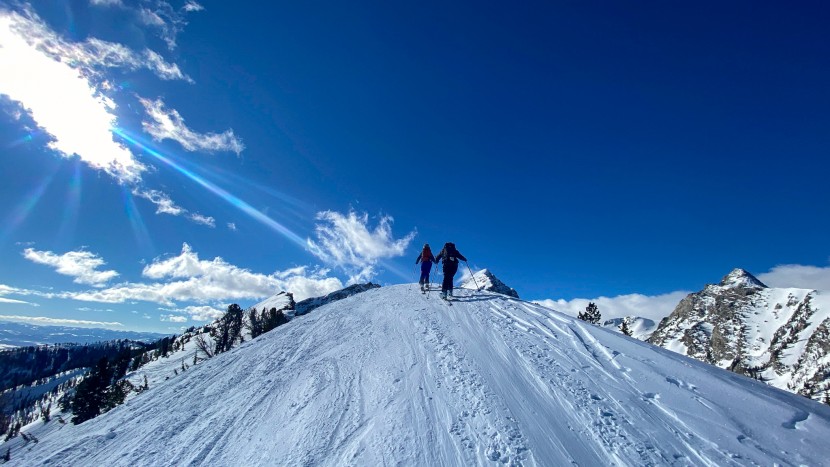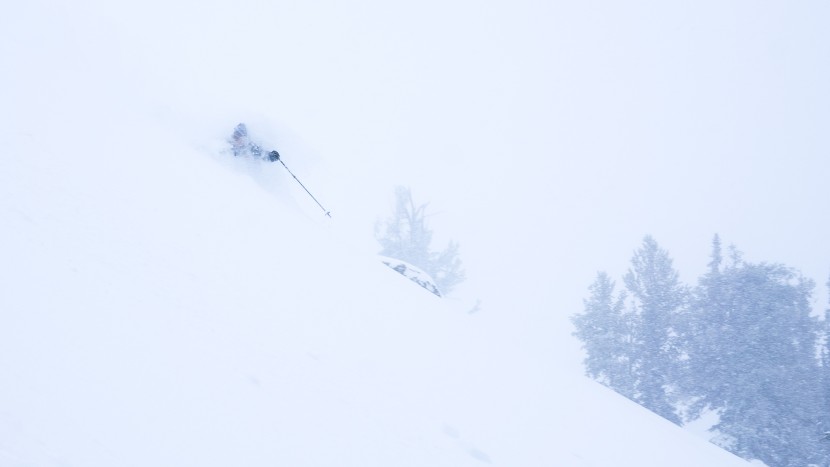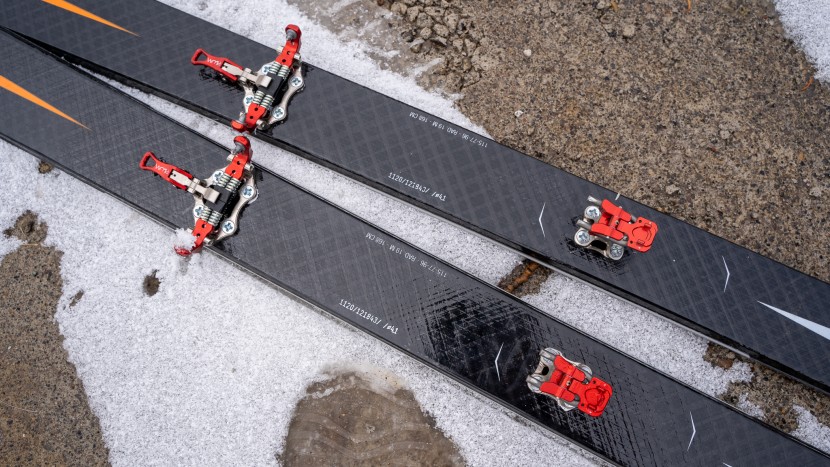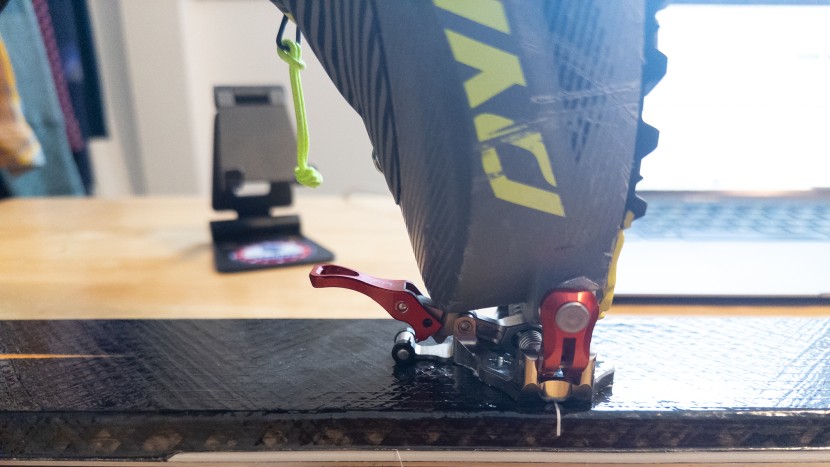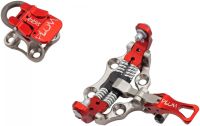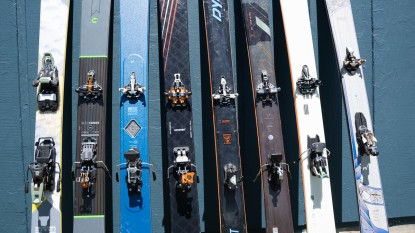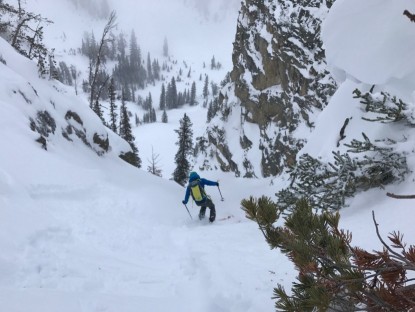Plum Race 99 Review

Our Verdict
Our Analysis and Test Results
This is a ridiculously light AT binding. In fact, it is the lightest binding we recommend for actual backcountry skiing. There are lighter options on the market, but those are suitable only for “skimo racing” in controlled environments. In the “real” backcountry you will very reliant on your equipment. The simple, strong construction of the Plum R99 hasn't let us down.
Weight
On our scale and in our standardized practice (weighing everything needed to use the bindings. In this case, screws and the binding parts) one of the Plum R99 bindings weighed 121 grams. That's 242 grams for the pair, or 0.53 pounds. The “R99” model name implies a weight of 99 grams. Other places on the web indicate a weight between 99 and 101 grams. We have to assume that none of these other weights include screws. We did not weigh the bindings without screws, but we can confirm that 8 binding screws weigh 20 grams. In any event, if those few grams matter to you, make sure that you are comparing binding weights with all the parts factored in. In the end, it doesn't matter too much with the Plum R99; no matter how it is weighed it is the lightest product in our test.
Downhill Performance
You choose these bindings for optimum uphill efficiency and when you require minimal downhill performance. That said, the Plum R99 works real well downhill. Better, even, than some other slightly heavier options. It is releasable and offers a secure feeling retention during normal skiing. There is no forward pressure or meaningful elasticity. On the small skis and small boots you are likely to pair these bindings with, these drawbacks won't matter too much. The most clever downhill performance attribute is the release options at the time of mounting. Mount the heel piece one way and you get a release value of 6. Turn it the other way and it is 8. Either way, the heel tower turns to face forward for use. These numbers are approximations of the scale used in third party certifications. The Plum R99 release values are not certified.
Touring Performance
Minimal weight enhances your touring experience, overall. But beginner skinners, especially in stiffer boots, will miss more and higher heel lifters. Otherwise the toe piece offers full range of motion and the tiny construction collects minimal icing.
Ease of Use
Simplicity is an ease of use attribute. You don't have much to adjust or decide with the Plum R99. Getting in and out is average. In most cases, switching from downhill to uphill requires nothing more than engaging the touring flap. That “touring flap” covers the heel pins and serves as a lower mid-range heel lifter. Switching from uphill to downhill, as with many tech bindings, can be done with the skis still on one's feet. In this case, lifting the touring flap from the pins requires a fair amount of effort. It snaps between the heel pins during tour mode. It has to be unsnapped from there to get to downhill mode. Other race style heel pieces are easier to flip from uphill to downhill mode.
Durability
We have two things to say about the Plum R99 bindings, in terms of durability. First, they are all metal. This inspires confidence and lends meaningful strength and resilience. Other bindings in this weight range include some plastic here and there. Those other bindings, though, don't necessarily suffer a ton for the well-placed and engineered plastic. Next, the heel pins are all one piece. This “u-spring” method of integrating the heel pins with the spring for upward release is simple and clean and dates back to the earliest of tech bindings. U-spring heel pins present the same surfaces all the time to boot fittings. Wear forces are concentrated on u-spring heel pieces. Individual, rotating heel pins, as found on some heavier bindings, spread out the wear forces. In this case, that u-spring/heel pin is made of titanium for weight savings. Others are made of steel. Titanium is cool, but is also less hard than steel. Downhill skiing and stomping into the bindings introduces a ton of steel-on-titanium (boot fitting on heel pins) action. The pins will wear out quite rapidly. In our first 10,000 vertical feet of skiing we noticed visible wear on the heel pins. Our experience with other heel pins like this suggests that in about 50000 vertical feet the wear will impact performance. As of this writing, replacement heel pin/springs are available for retail purchase.
Should you buy the Plum Race 99?
Plum recommends the R99 for “racing and training only”. We don't contradict manufacturer recommendations lightly, but we also don't subscribe to all dogma. These are just barely enough to use in the real backcountry. We have used them in serious settings and wouldn't hesitate to do so. We recommend that only very high end practitioners do so. A good application for these bindings is for a skimo racer that is looking to assemble a ski package that is mainly for training but will be very occasionally pressed into duty for specific and carefully assessed backcountry missions. Or vice versa: this is a quiver item for specific missions and the occasional skimo race.
What Other AT Bindings Should You Consider?
If you like the idea of race-style bindings in the backcountry but want greater durability and the manufacturer's endorsement for real backcountry use, check out the Top Pick Dynafit Superlite 150. The Superlite is 2x as robust for 1.5x the weight. That's a good deal. Similarly, the ATK Trofeo is a good step up in durability for only a few dozen more grams.
| Awards | |
|---|---|
| Price | $619 List |
Overall Score  |
|
| Star Rating | |
| Bottom Line | The absolute lightest bindings we recommend for any sort of "real" backcountry skiing |
| Pros | Wicked light, all metal, clever release value variation |
| Cons | No crampon slot, no length adjustment |
| Rating Categories | Plum Race 99 |
| Weight (35%) | |
| Downhill Performance (25%) | |
| Touring Performance (20%) | |
| Ease of Use (15%) | |
| Construction Quality (5%) | |
| Specifications | Plum Race 99 |
| Weight of 1 binding and screws, lightest possible configuration (in grams) | 121 |
| Release Value Range | 6 or 8 |
| Brakes? | No |
| Brake Width Options | N/A |
| Weight of 2 bindings, common setup (pounds) | 0.53 |
| Weight of 2 bindings (in grams). Multiple options are noted where we have tested multiple options. | 242 |
| Stack height: average of toe and heel pin height (in mm) | 30 |
| Toe/heel delta: difference in height between heel pins and toe pins (in mm) | -1 |
| Meets ISO/DIN Standard? | No |
| Ski Crampon compatible? | No |


